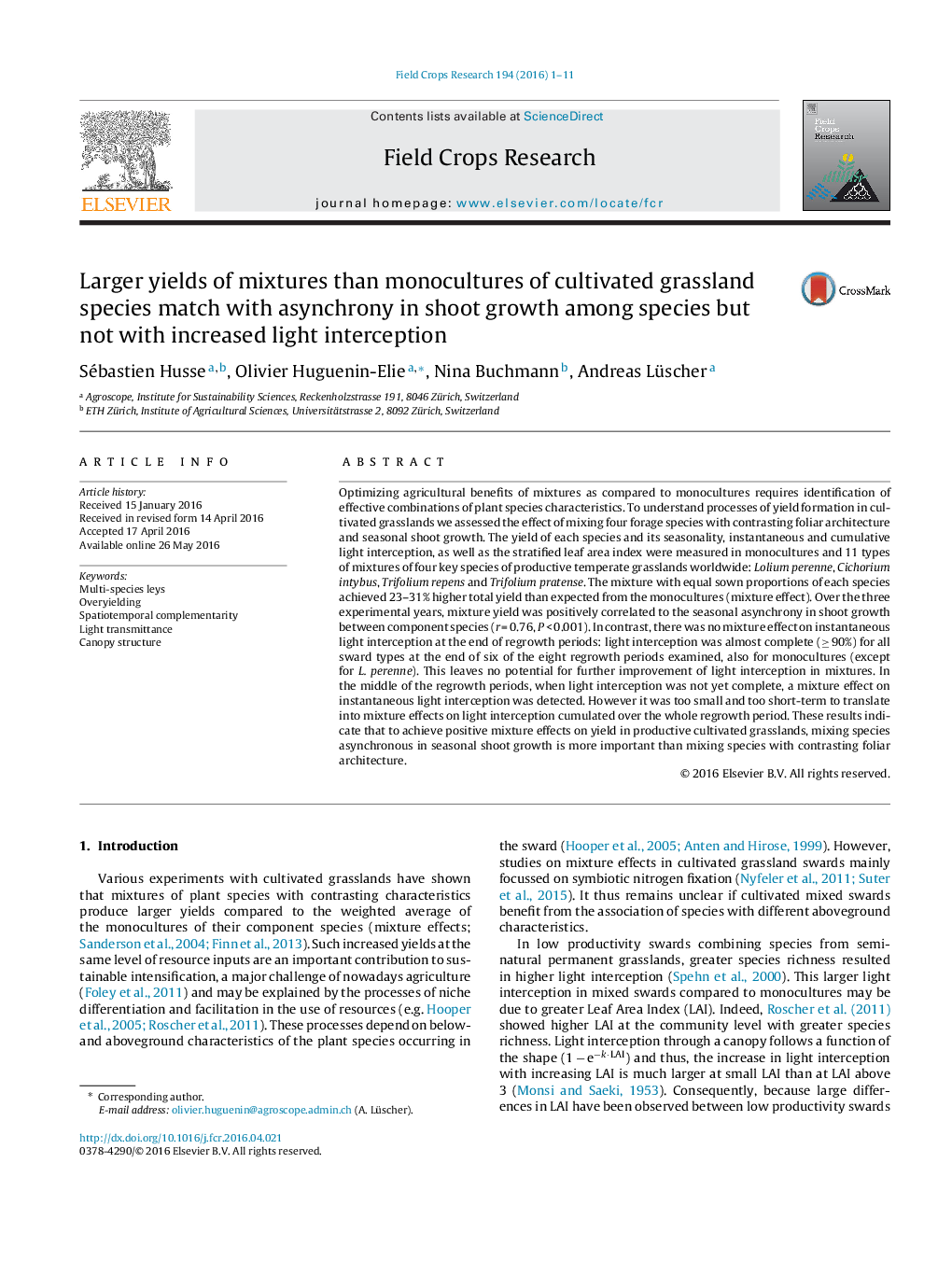| کد مقاله | کد نشریه | سال انتشار | مقاله انگلیسی | نسخه تمام متن |
|---|---|---|---|---|
| 4509826 | 1624669 | 2016 | 11 صفحه PDF | دانلود رایگان |
• Four species mixtures achieved large yield advantages (+31%) over monocultures.
• Seasonal asynchrony in growth of mixed species contributed to this yield advantage.
• Different foliar architecture of mixed species did not explain this yield advantage.
• Light interception was nearly complete in monoculture and not enhanced in mixtures.
• Temporal rather than spatial shoot complementarity benefits productivity of leys.
Optimizing agricultural benefits of mixtures as compared to monocultures requires identification of effective combinations of plant species characteristics. To understand processes of yield formation in cultivated grasslands we assessed the effect of mixing four forage species with contrasting foliar architecture and seasonal shoot growth. The yield of each species and its seasonality, instantaneous and cumulative light interception, as well as the stratified leaf area index were measured in monocultures and 11 types of mixtures of four key species of productive temperate grasslands worldwide: Lolium perenne, Cichorium intybus, Trifolium repens and Trifolium pratense. The mixture with equal sown proportions of each species achieved 23–31% higher total yield than expected from the monocultures (mixture effect). Over the three experimental years, mixture yield was positively correlated to the seasonal asynchrony in shoot growth between component species (r = 0.76, P < 0.001). In contrast, there was no mixture effect on instantaneous light interception at the end of regrowth periods: light interception was almost complete (≥ 90%) for all sward types at the end of six of the eight regrowth periods examined, also for monocultures (except for L. perenne). This leaves no potential for further improvement of light interception in mixtures. In the middle of the regrowth periods, when light interception was not yet complete, a mixture effect on instantaneous light interception was detected. However it was too small and too short-term to translate into mixture effects on light interception cumulated over the whole regrowth period. These results indicate that to achieve positive mixture effects on yield in productive cultivated grasslands, mixing species asynchronous in seasonal shoot growth is more important than mixing species with contrasting foliar architecture.
Journal: Field Crops Research - Volume 194, 1 August 2016, Pages 1–11
